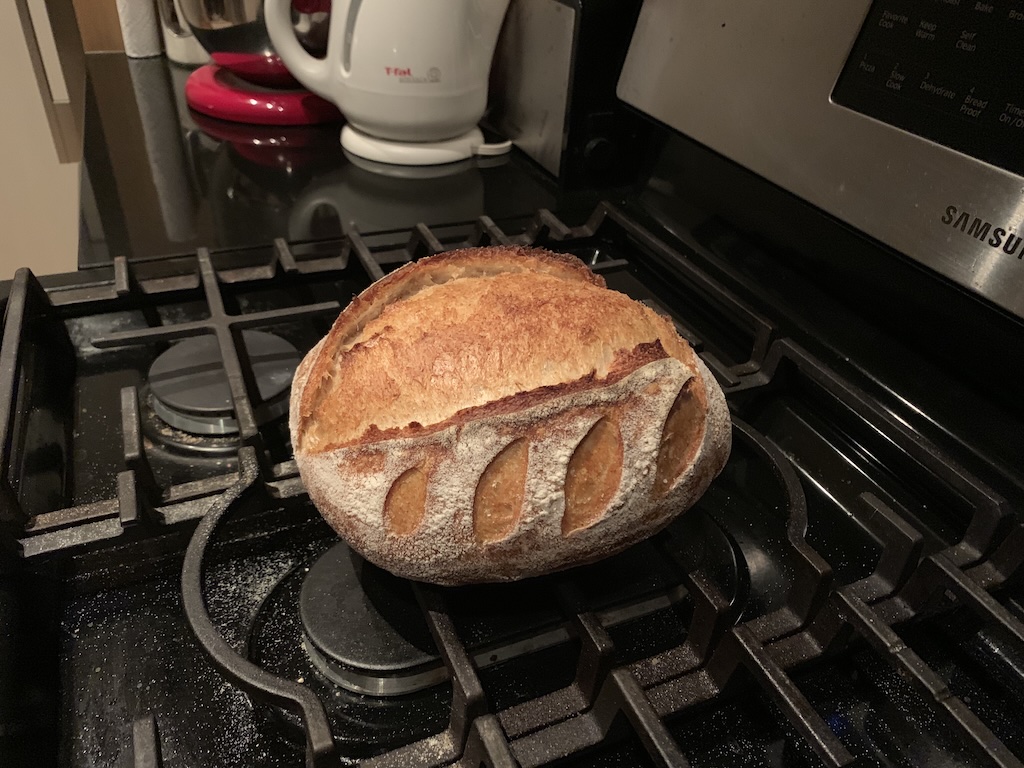
bread
| Version | 1.3 |
|---|---|
| Created | 10.2.2019 |
| Updated | 7.5.2020 |
Before you begin Link to heading
Before/after starting also watch this video to see how knead and fold https://www.youtube.com/watch?v=2FVfJTGpXnU
The starter Link to heading
You need this instead of instant and other forms of commercially available yeast. Takes a little while to get it ready so makes sense to ask some from a friend or bakery (if you are in Montreal i got you covered )
Initial setup Link to heading
- start with 130g of lukewarm water and 130g of flour mix (65g whole grain and 65g all purpose white)
- mix it and leave it for about 2-3 days in a container covered with a clean tablecloth somewhere warm in your apartment
- bubbles will formulate and will have a sweet fermented fruit smell
- on day 4 you can start feeding it daily
- Feeding the starter
- take 50g of the starter and add 50g of lukewarm water and 50g of flour mix (i’m using 50/50 whole wheat and all purpose)
- discard the rest of your starter or give it to a friend
- next day repeat (preferably around the same time) --> take 50g out of this mix add the water and flour and you’re done for the day
- repeat this process for about 5-7 days (depending on your environment) until the starter smells sweet and fermented and there’re lots of bubbles
Keeping your starter primed for bread making Link to heading
- 2-3 days before you want to make your bread increase the above mentioned feeding process to twice-a-day (morning and evening about 12 hours apart)
- It is also advisable to increase the amounts to say 75g (75/75/75g starter/water/flour-mix) but up to you really - keep in mind when you make bread you will need around 160g of starter for one loaf so calculate accordingly to make sure you are left with some starters to carry forward
- your starter should now be ready for bread-making - you can test it’s readiness by taking a spoonful and dropping it into water. if it floats, you’re good to go
Make the bread Link to heading
- take 290g lukewarm water, 100g starter and 200g all purpose unbleached white flour and 200g whole wheat flour and mix it in a bowl with the handle of a wooden spoon
- leave it sit for 30 minutes (autolyse phase) before adding 8g salt
- then start kneading/folding for about 2-3 minutes with wet hands to ensure flour, starter, water and salt are evenly distributed in the mix
- put it in a bowl and cover it with a clean tablecloth for 3-4 hours until it grows in size by ~25%
- Optional folding albeit highly recommended folding routine: it is advisable to cut the initial kneading somewhat short (6-8 minutes) and proceed with a less elastic, more sticky dough that you fold clockwise 4 times onto itself upon placing it into the bowl for the bulk rise. Repeat the folding every 30 minutes for the next 2 hours → four folds total per round that you can repeat 2-3 times (8-12 folds every 30 minutes). After the last fold leave it resting for 1-1.5 hours
- place it on the counter top and fold it four times clockwise and let it rest for about 30 minutes covered with a tablecloth (bench rest)
- thus ends the bulk rise phase after which you need reduce the ball’s size to near original by folding the dough not to letting the gases escape that formulated in the dough and formulate it into a shape of a ball to finally put it into a proofing basket for another 3-4 hours
- you preheat the oven to 500F with a cast iron Dutch oven
- once preheated you flip the bread into the container and score it with a scissor, razor blade or similarly sharp object and bake it 20 mins with the top on and then 10 mins still with the lid on but the heat reduced to 450F. After the 10 minutes is up remove the top and let it bake for another 15-20 minutes until the crust becomes deep golden-yellow
- leave it on the rack to cool down for 10-15 minutes and you’re done!
Appendix Link to heading
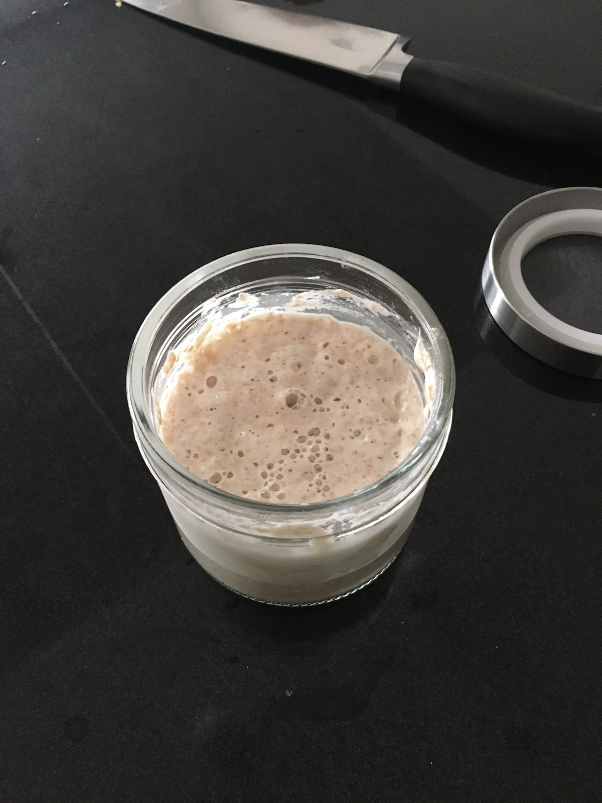
Active starter ready for breadmaking

Premix for 30 autolyse

Dough after initial kneading (10-15 minutes) without the folding option
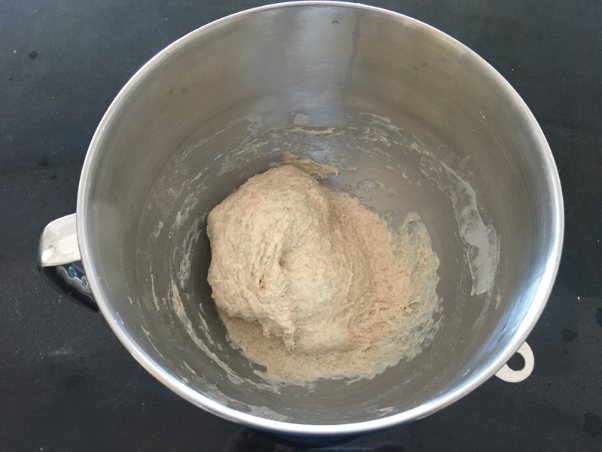
Dough with kneading cut short to allow for developing gluten/strength through series of folds
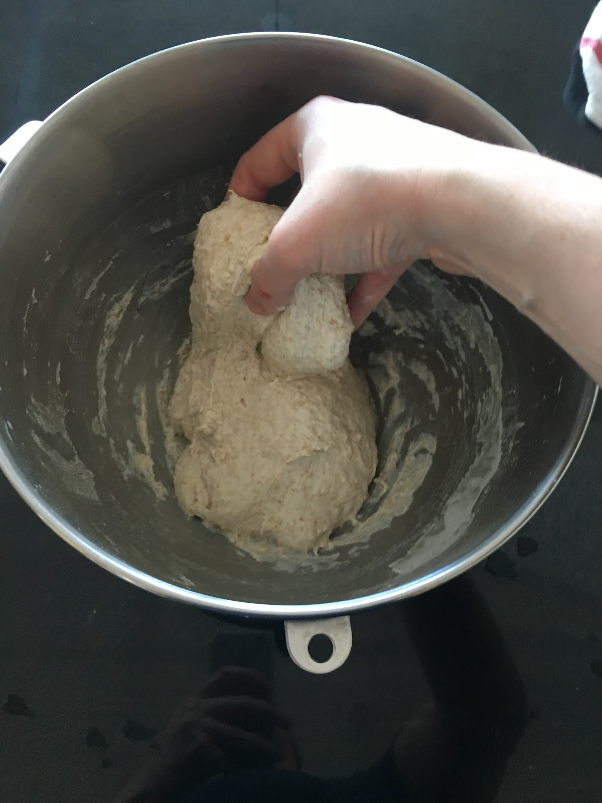
Folding 1
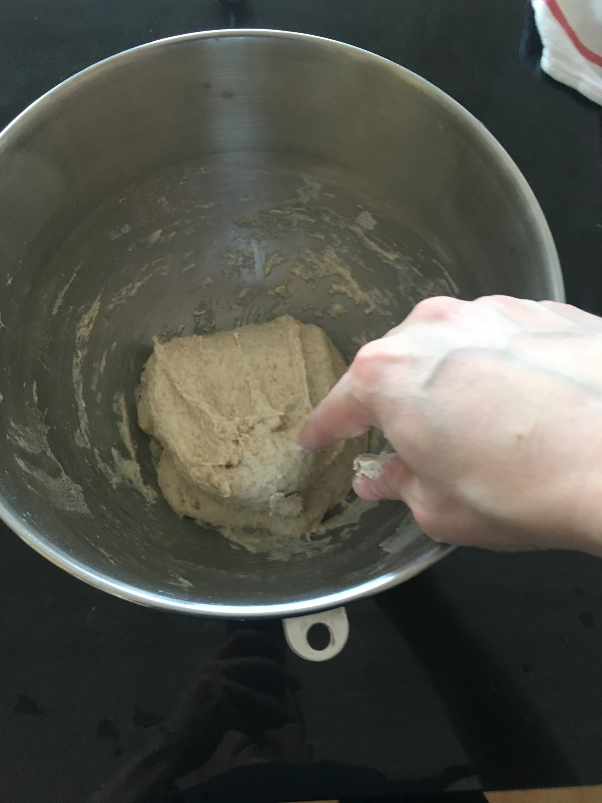
Folding 2
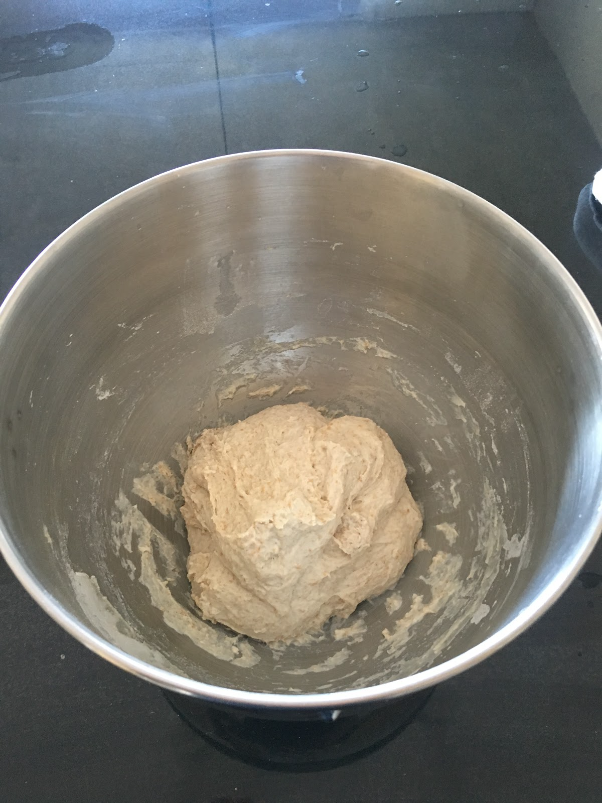
After 4 folds performed clock-wise
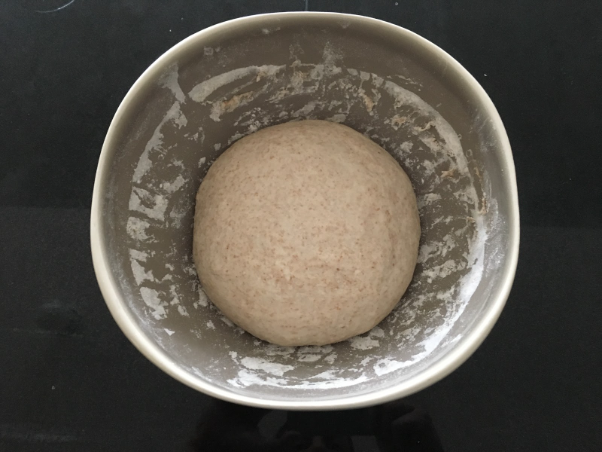
Dough starting bulk-rise
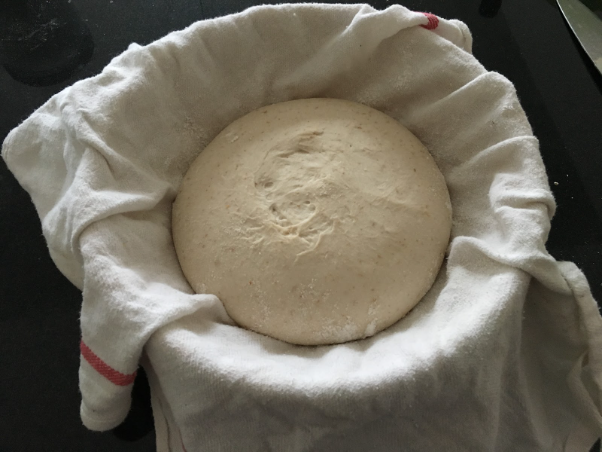
Bread goes into proofing basket with seam-side up
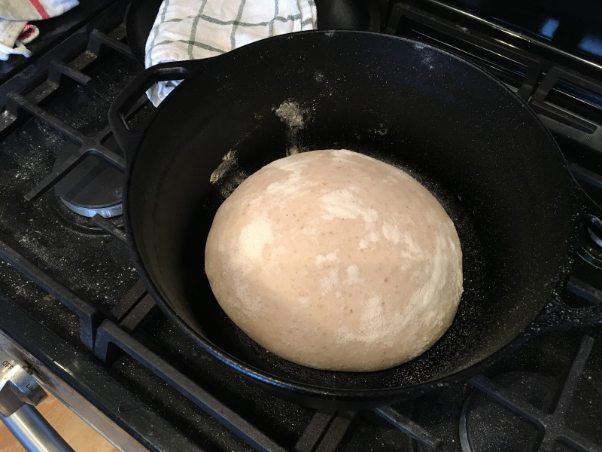
Bread lands in dutch oven from proofing basket just before scoring